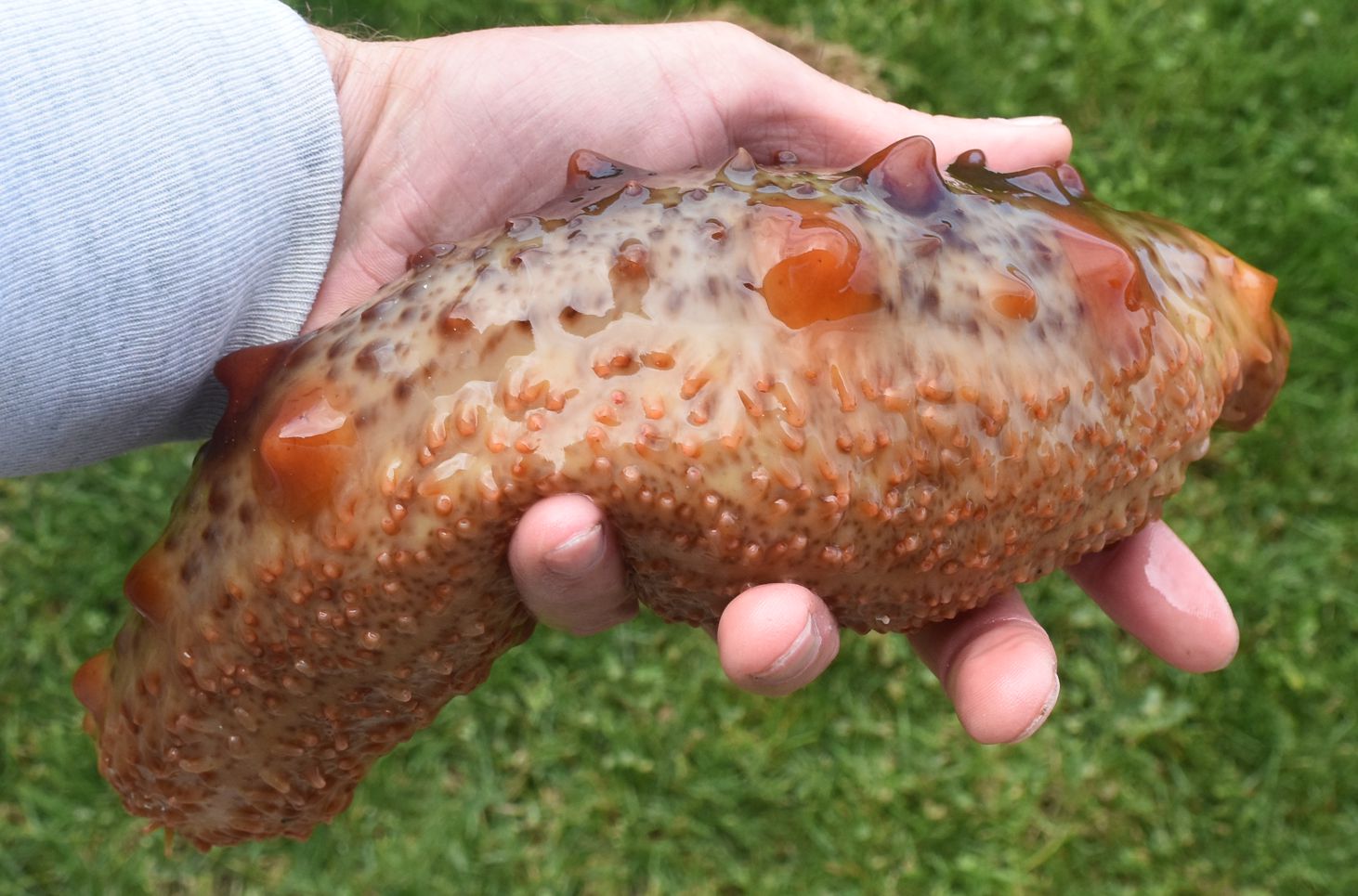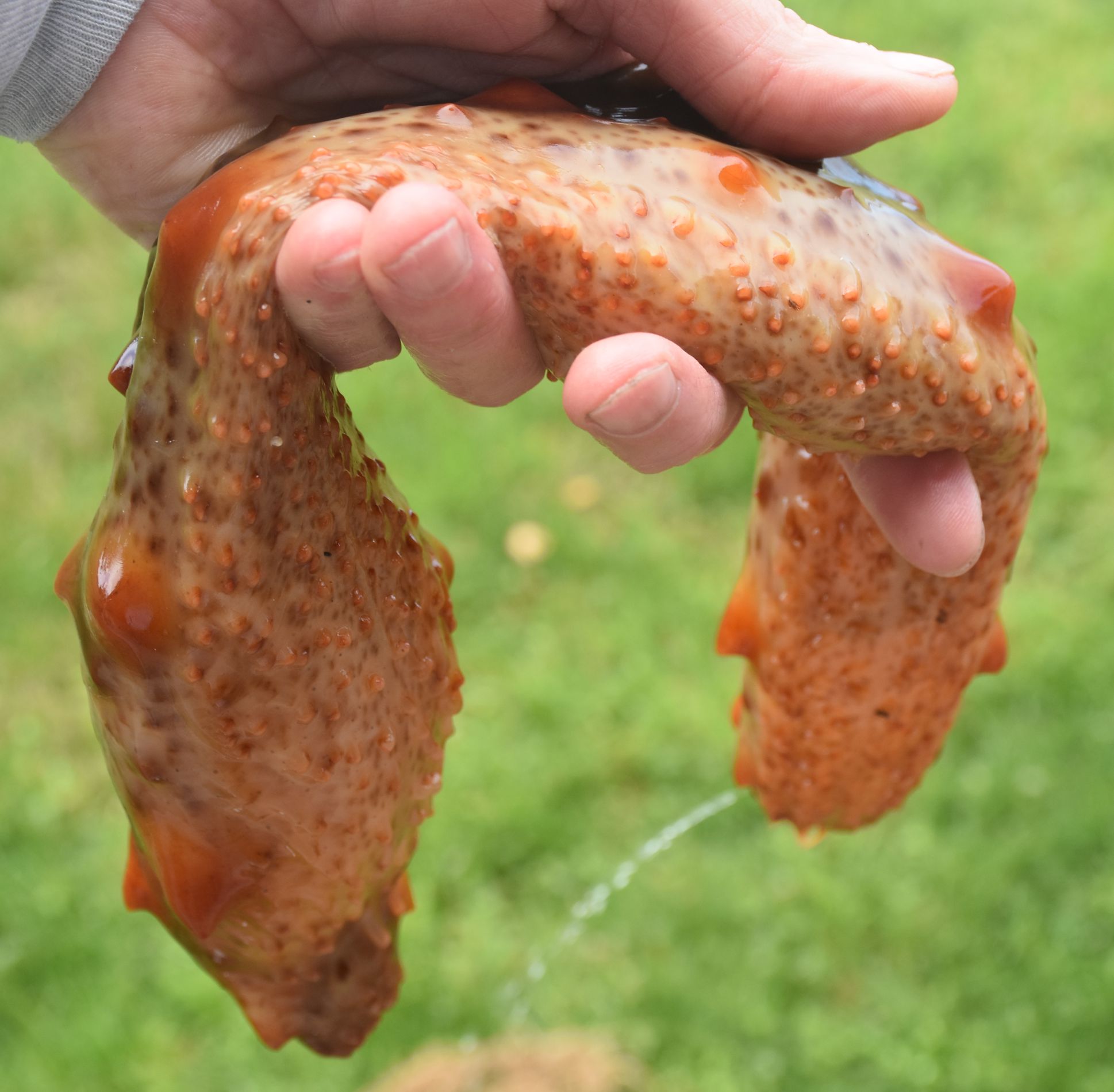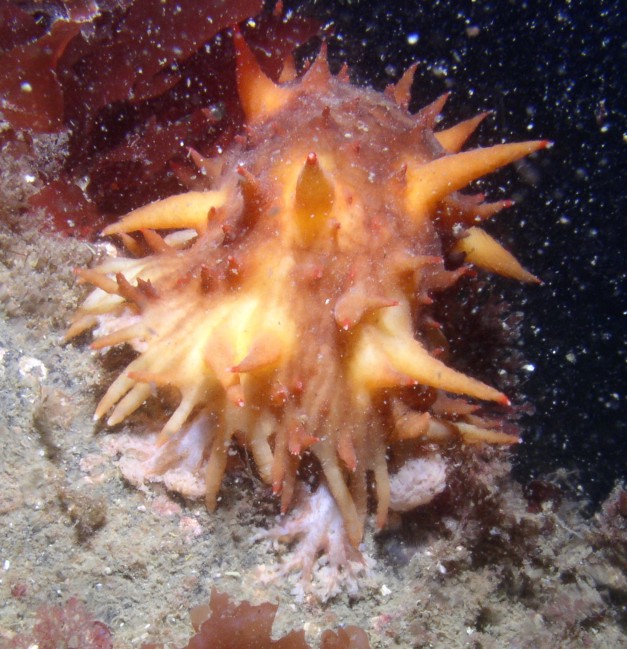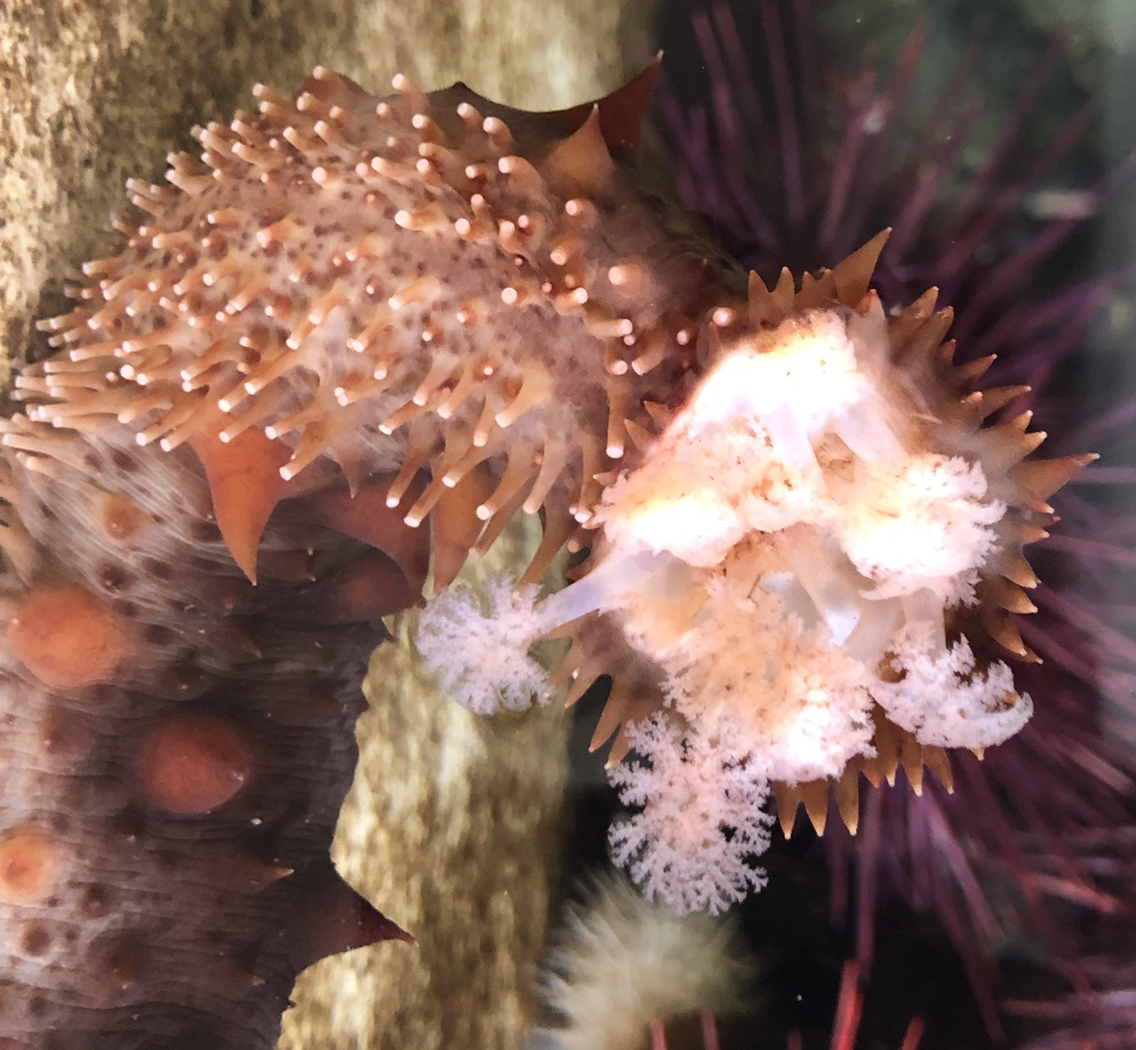Apostichopus californicus (Stimpson, 1857)Common name: California Sea Cucumber, giant sea cucumber |
|
| Synonyms:
Stichopus californicus, Holothuria californica, Parastichopus californicus |
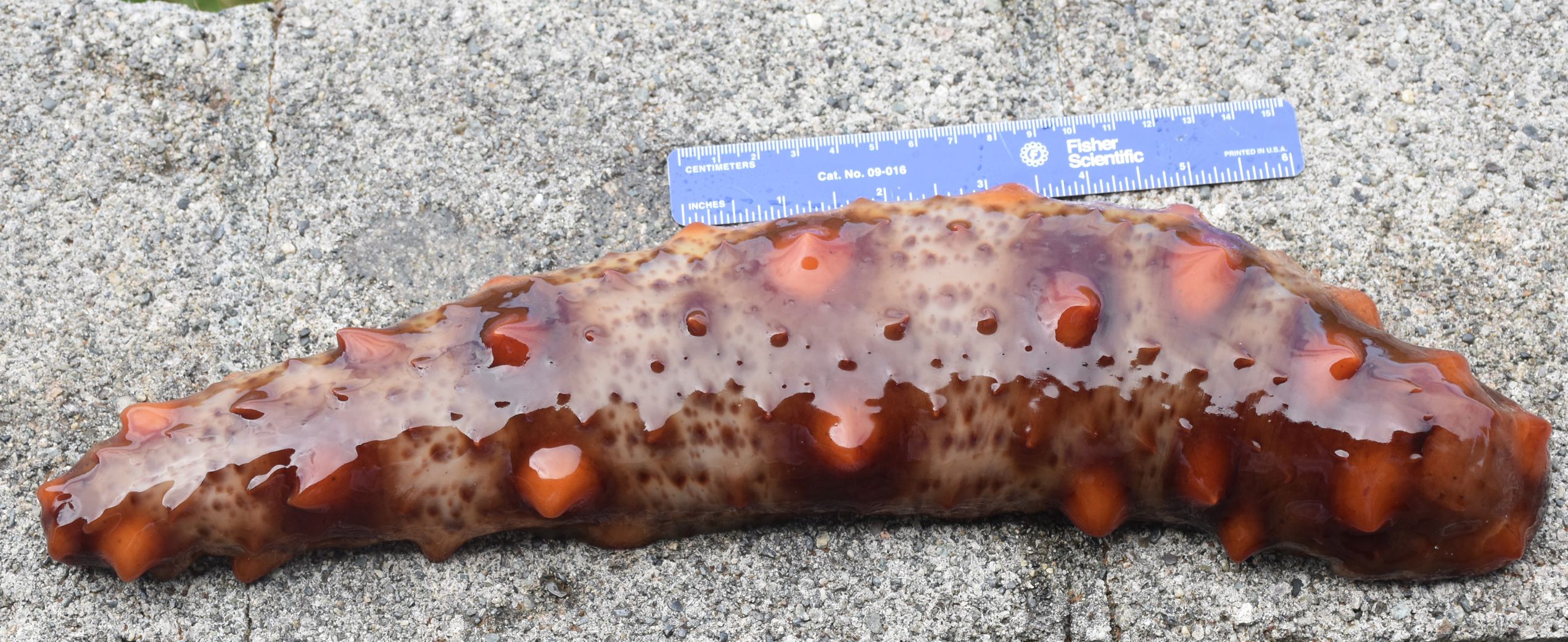 |
| Phylum Echinodermata
Class Holothuroidea Order Aspidochirotida Family Stichopodidae |
|
| Apostichopus californicus Found in Rosario Bay, WA. Side view. Animal is approx. 45 cm in length. | |
| Photo by: Dave Cowles, July 2020 | |
How to Distinguish from Similar Species: Apostichopus parvimensis, which lives from Monterey Bay south, is very similar in form and can grow to nearly as large, but the body is chestnut brown dorsally and much paler below; plus the tips of its papillae are tipped with black instead of red. Parastichopus leucothele is colored similarly but lives at deeper depths (24-285 m) and is colored bright orange with rusty brown patches and small white papillae.
Geographical Range: From the western Aleutian Islands and Bering Sea off Alaska to Baja California
Depth Range: Low intertidal zone to 90 m deep
Habitat: Exposed and sheltered areas protected from strong wave action. Subtidal species are found primarily on gravel and shell debris
Biology/Natural History: P. californicus is the largest sea cucumber species along the Pacific Northwest coast. The species feeds on organic detritus and small organisms, which it ingests with bottom sediments. The primary predators of P. californicus are the sea stars Pycnopodia helianthoides and Solaster endeca, but the species is also occasionally eaten by sea otters and man. Unlike many tropical sea cucumbers, P. californicus does not store substances toxic to predators. The hindgut bears a pair of highly branched diverticula, which project into the coelomic cavity of the body and serve as “water lungs”. Oxygenated water is pumped into these respiratory trees in several successive inhalations and then expelled in one powerful exhalation. Breeding occurs in the summer. Development is indirect. The sperm have spherical heads and an unusually low DNA content. The fertilized eggs develop into auricularia larvae which metamorphose into doliolaria larvae which settle. The pelagic phase lasts from 7 to 13 weeks in the laboratory. Like many sea cucumbers, this species is capable of eviscerating much of its internal organs when disturbed (photo). Populations of P. californicus in the Puget Sound also lose and then re-grow nearly all their internal organs during October and November and then regenerate new sets of organs, but this process does not appear to involve evisceration. Evisceration may also occur if the animals are kept in warm or stale water. The scale worm Arctonoe pulchra may occur as a commensal on P. californicus.
Recently this species has been discovered to be able to
take
up nutrients via the respiratory tree in the anus. Brothers
et al. (2011) found that labeled stable isotopes from the seawater made
their way into the cucumber through the anus and respiratory tree,
especially in late winter/early spring when the animal was regenerating
its gut. Jaeckle and Strathmann (2013) found that
radiocarbon-labelled unicellular algae and iron-containing
macromolecules could also be incorporated into animal tissues via the
respiratory tree.
| Return to: | |||
| Main Page | Alphabetic Index | Systematic Index | Glossary |
References:
Dichotomous Keys:
Carlton,
2007
Kozloff,
1987
General References:
Lamb
and Hanby, 2005
Lambert,
1997
Morris,
Abbott, and Haderlie, 1992.
Kozloff,
1993.
O'Clair
and O'Clair, 1998
Scientific Articles:
Brothers, C.J., J. R. Nestler, and R.W. Lee, 2011. Visceral regeneration by the uptake of dissolved organic material in the sea cucumber Parastichopus californicus. Abstract, 6th North American Echinoderm Conference, Anacortes, WA.
Jaeckle, William B. and Richard R. Strathmann, 2012. The anus as a second mouth: anal suspension feeding by an oral deposit-feeding sea cucumber. Invertebrate Biology 132: pp 62-68
McEdward, Larry R. and Benjamin G. Miner, 2006. Estimation and interpretation of egg provisioning in marine invertebrates. Integrative and Comparative Biology 46:3 pp 224-232
Woodby,
D., S. Smiley, and R. Larson, 2000. Depth and
habitat distribution
of Parastichopus californicus near Sitka,
Alaska. Alaska Fishery
Research Bulletin 7: 22-32
General Notes and Observations: Locations, abundances, unusual behaviors, etc.:

Another photo of Apostichopus californicus.
This species
can become short, round, and turgid or long, limp, and
flaccid. Photo
by Dave Cowles, July 1997
On June 22, 2005 divers from the station gathered 5 A. californicus for an experiment. All five were placed into the same running seawater tank, measuring 170 x 48 x 120 cm. Within a few hours (about sundown) four of the five cucumbers began releasing gametes into the water. All gametes released were in a thin, wispy white stream which looked like sperm. They continued releasing gametes until the tank, though it was being gently flushed with seawater, was cloudy. Gamete release continued for at least half an hour. The day before (June 21) had been the full moon. Below I have a still photo, plus a link to a digital movie of gamete release by the cucumbers.
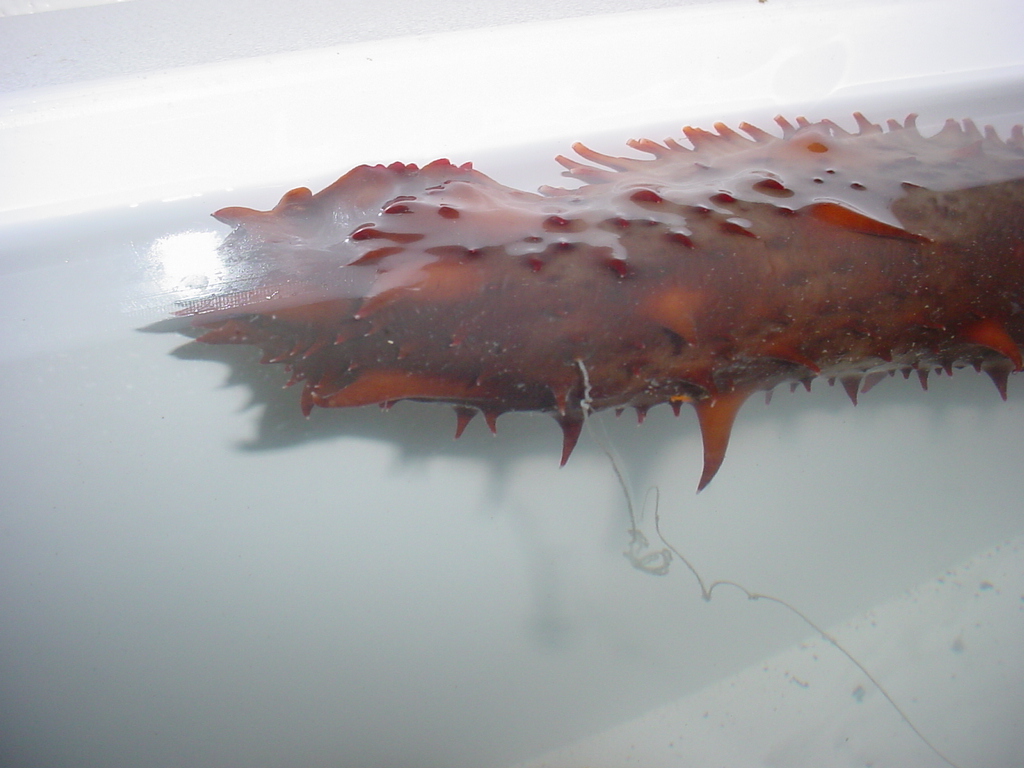
Gametes being released by Apostichopus californicus.
Photo
in the lab by Dave Cowles June 22, 2005.
Here is a link to a digital .MPG movie of Apostichopus releasing gametes on June 22, 2005.
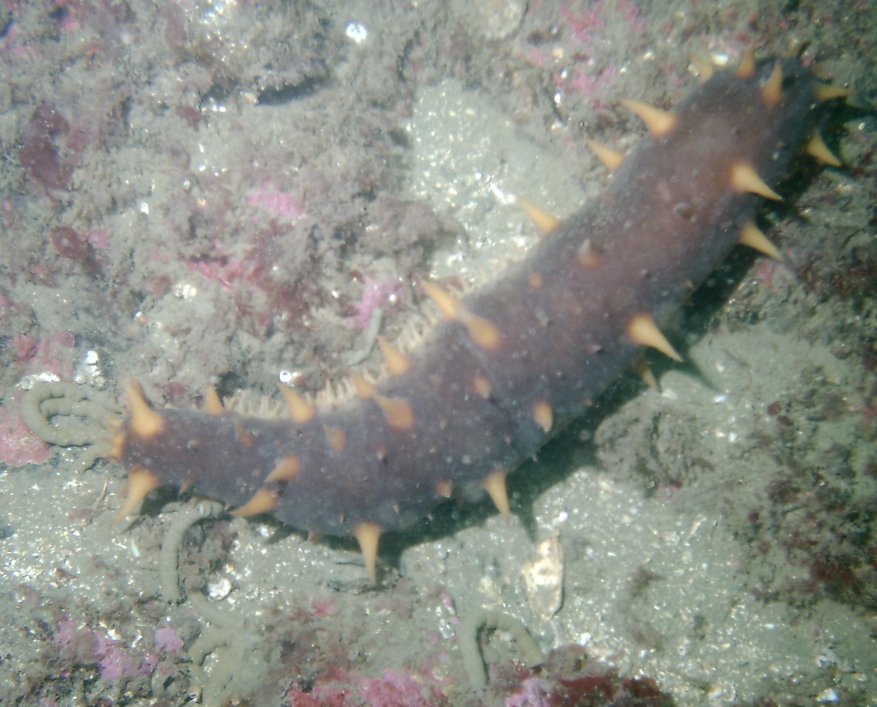
This individual is feeding on the sediment near Rosario.
Photo
by Jim Nestler, July 2005
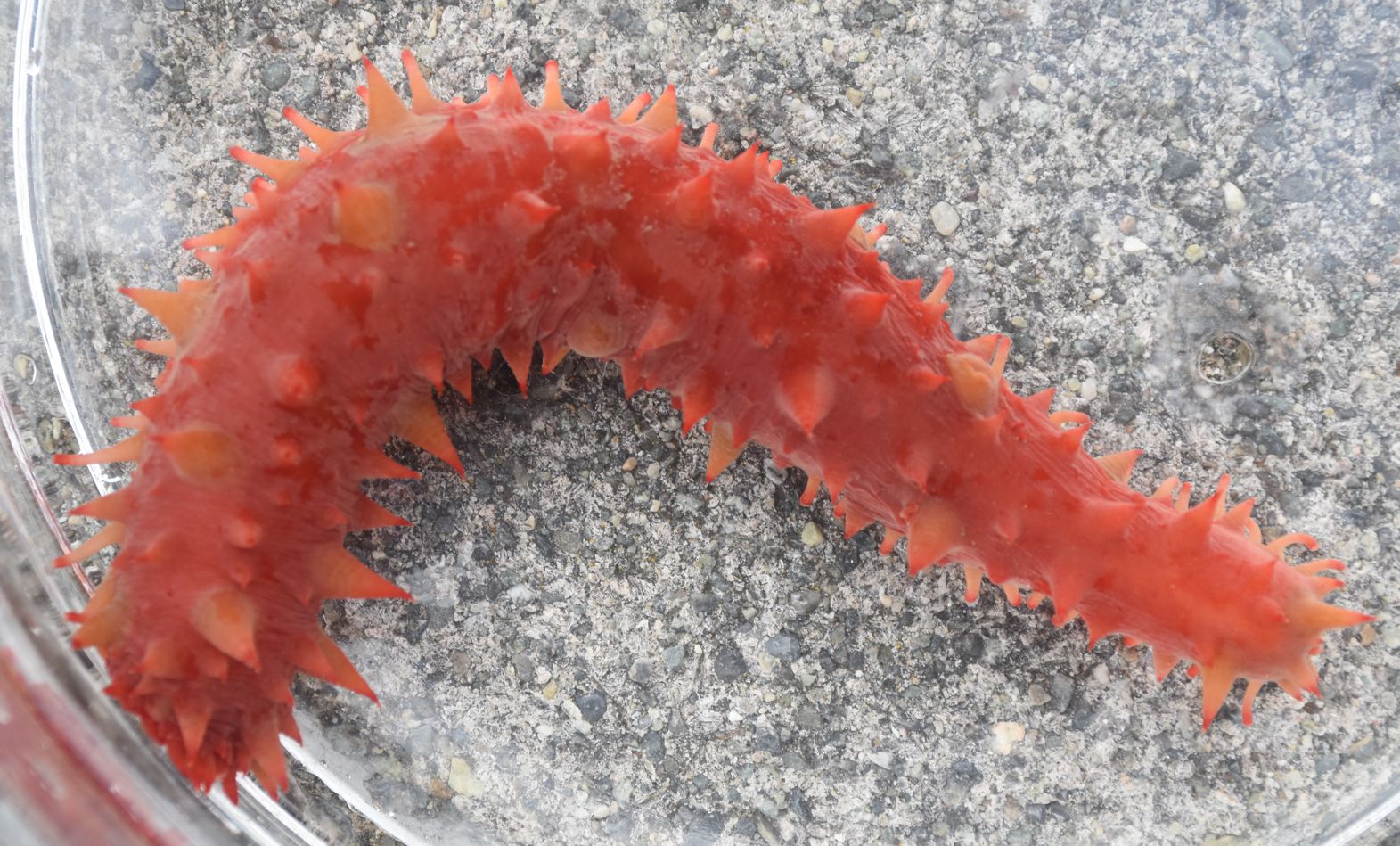
A small individual about 14 cm long. Photo by Dave Cowles, July 2020

The moplike oral tentacles, characteristic of Order Aspidochirotida, with which they feed on benthic sediment can be seen through the aquarium glass as this individual attempts to feed. Photo by Dave Cowles, July 2020
Abstract from Kari McCloskey MS thesis, Department of Biology, Walla Walla College, May 2006:
Diel and Seasonal Cycles of Movement, Metabolism, and Nutrient Excretion by the Temperate Holothurian Parastichopus californicus
Sea cucumbers (Phylum Echinodermata, Class Holothuroidea) influence ocean communities by affecting physical and chemical characteristics of water and sediment through their deposit feeding and excretion activities. Several tropical species of sea cucumbers exhibit daily cycles of behavior and physiological processes, though research on this phenomena in temperate waters is limited. Seasonal cycles of behavior and physiological processes have also been observed to occur among temperate and tropical species. Daily and seasonal movement rates, metabolism, and nutrient excretion were measured for the temperate sea cucumber Parastichopus [now Apostichopus] californicus. Daily differences in phosphate excretion were noted for P. californicus during the summer, with significantly greater concentrations recorded at night than during the day. No day vs. night differences were observed for movement, metabolism, or ammonium excretion by P. californicus in either summer or winter. Movement rate and the concentration of excreted phosphate were significantly lower during winter than in the summer. Metabolic rate however, was significantly greater during the winter compared to the summer. Animal size varied seasonally, with mass and volume during the winter being significantly less than in the summer. These data suggest that some behavioral and physiological process of P. californicus may occur over daily and seasonal cycles, while others do not.
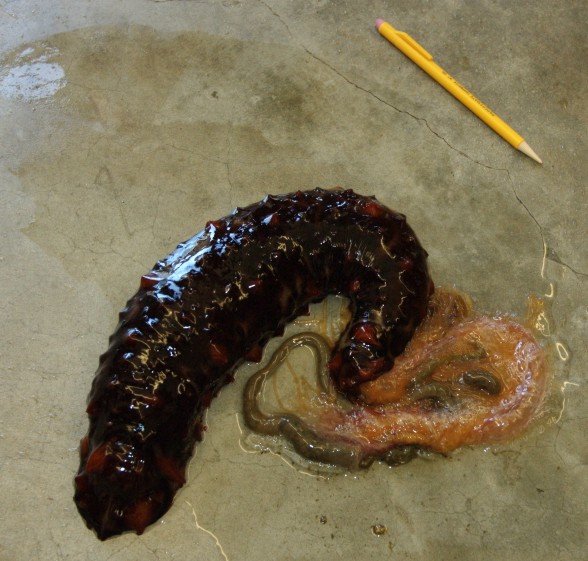
This individual eviscerated its gut and respiratory tree after being
held a few minutes July 6, 2010. Photo by Dave Cowles
Authors and Editors of Page:
Kelly Williams (2002): Created original page
Edited by Hans Helmstetler 12-2002; Dave Cowles 2005-

